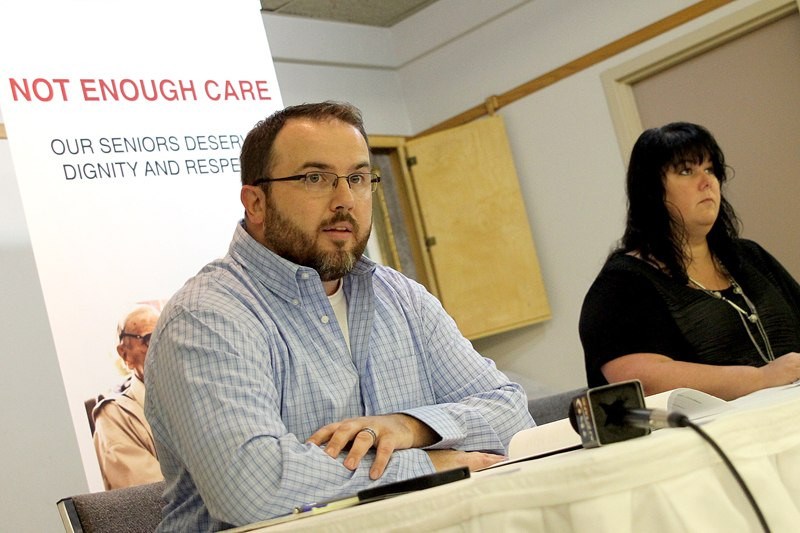THUNDER BAY -- Dorothy Winterburn says personal support workers and registered practical nurses at Ontario’s long-term care facilities shouldn’t feel like they’re putting in time on the assembly-line floor.
But until the provincial government lives up to its pledge to return mandatory staffing levels and agrees to provide a minimum of four hours of daily attention to each patient, levels of care are going to continue to slip.
It’s leading to bed sores, infection, incontinence, abuse and unsafe work practices, the survey reveals. Incoming patients are also not always being screened for infectious diseases, including C. difficile and VRE, often leading to unnecessary outbreaks.
Winterburn, a personal support worker in Haliburton Country, on Friday helped deliver a damning report that suggests workers are demoralized and defeated by chronic understaffing, leading to lonely and often depressed residents.
The system, as it stands, is doing no one any good, said Winterburn, adding she routinely shops for patients in her care who have no family, even exchanging Christmas gifts and hanging around after her shift is completed to provide the emotional care many residents are missing.
Emotional care is just as important as medical care for many patients, she said.
“There is no dignity is assembly-line care. And there is no dignity in assembly-line feeding,” Winterburn said.
“We are not factory workers.”
Because long-term care facilities don’t have adequate staff in the estimation of PSWs and RPNs, workers are often told they only have so much time to provide basic care to their patients. Instead of allowing residents to get dressed or eat at their own leisure, these everyday necessities are strictly regimented in many locations.
It’s not fair, Winterburn said.
“You should never have to rush yourself to provide care. You should never have to rush a resident.”
The report, a focus study of PSWs and RPNs, labels resident-to-staff ratios as dangerously high.
PSWs are responsible for up to 15 residents per day shift and 42 residents overnight, while RPNs average 32 patients throughout the day.
“Since the 1990s, mandatory long-term care staffing levels have not kept pace with the needs of residents,” said Kevin Tyrrell, the regional vice-president of the Ontario Council of Hospital’s Union.
The survey, which collected personal stories of workers in the field, tell a disturbing tale, he added.
“The stories that they shared with us, quite frankly, were heartbreaking. The fact is they feel they are not able to provide quality care for the residents they look after. They feel like they’re working in a warehouse, rather than a home-like environment.”
Ninety-one per cent of workers surveyed said they are unable to provide quality care, and 97 per cent cited not enough staff and heavy workloads as the reason.
